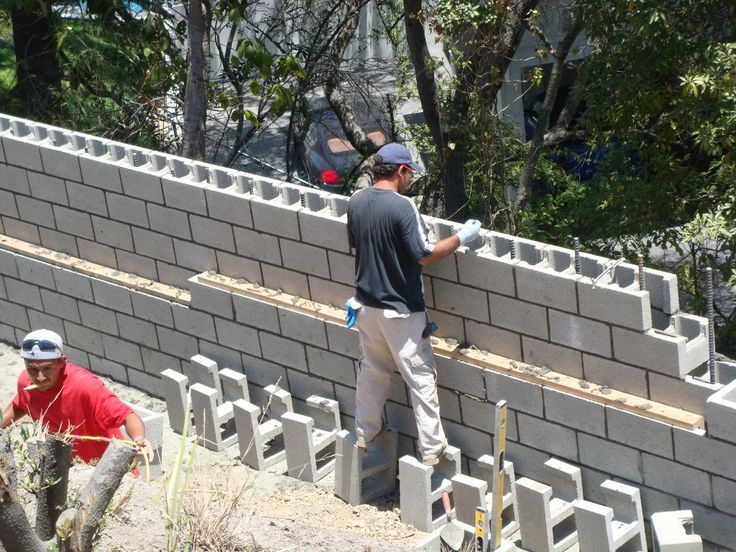What is the Average Cost to Install a Retaining Wall?

A retaining wall is more than just a functional structure — it’s a solution that helps hold back soil, prevent erosion, and improve the appearance of outdoor spaces. Many homeowners install them to create level areas for gardens, patios, or driveways, while others use them to protect property from soil shifting.
If you’re planning to install a retaining wall, one of the first questions you might ask is, “How much will it cost?” The answer depends on several factors, including materials, size, labor, and site conditions. Understanding these elements can help you budget effectively and choose the best option for your property.
Average Cost of a Retaining Wall
On average, homeowners spend between $3,500 and $9,500 for a standard retaining wall installation. Smaller walls using basic materials can cost as low as $1,500, while larger, more complex projects with premium finishes can exceed $15,000.
The price is typically calculated per square foot or linear foot. Most contractors charge between $20 and $50 per square foot, depending on design complexity and material type.
Factors That Influence the Cost
Several factors impact the total cost of your retaining wall:
1. Material Choice
The type of material is the biggest cost driver.
- Concrete blocks: Affordable, strong, and long-lasting, costing about $20–$35 per square foot.
- Natural stone: Elegant but pricier, usually $25–$50 per square foot.
- Poured concrete: Modern and sleek, costing around $30–$40 per square foot.
- Timber: Budget-friendly, starting at $15–$25 per square foot, but may require more maintenance.
2. Wall Height and Length
Taller walls require stronger engineering, more materials, and additional labor. A short garden wall might only be a few feet high, while a hillside stabilization wall could be over 6–8 feet tall, requiring permits and professional design.
3. Labor Costs
In many cases, labor can account for 30–50% of the total price. Rates depend on the contractor’s expertise, location, and the complexity of the job. For example, some Retaining walls Service in Ann Arbor MI may have higher rates due to local building codes or soil conditions.
4. Site Preparation
Clearing vegetation, leveling the ground, and adding drainage systems can significantly impact costs. Poor soil conditions or limited access to the site may also increase the budget.
Additional Cost Considerations
When budgeting for a retaining wall, it’s important to think beyond just the wall itself. Here are extra costs you might encounter:
- Permits: Depending on local regulations, you may need a permit for walls over a certain height.
- Drainage systems: Prevents water buildup behind the wall, protecting it from damage.
- Engineering fees: Large or complex walls may require a structural engineer’s input.
- Finishes: Decorative caps, lighting, or landscaping around the wall can add to the price.
Installing a retaining wall is not just about stacking materials — it requires proper engineering, drainage planning, and quality workmanship. Hiring an experienced contractor ensures the wall will last for years and meet safety standards.
Many homeowners in Michigan have found that Arbor Concrete stands out for its skilled craftsmanship, attention to detail, and understanding of local soil conditions. Their team has worked on projects ranging from small garden borders to large hillside stabilizations, delivering results that are both durable and visually appealing.
DIY vs. Professional Installation
While it’s possible to build a small retaining wall on your own, larger projects are best handled by professionals. DIY can save on labor costs, but it carries risks — a poorly built wall can fail, leading to expensive repairs. Professionals not only ensure structural integrity but also handle drainage, permits, and long-term durability.
Maintenance and Longevity
A well-built retaining wall can last 20–50 years or more, depending on the materials and construction quality. Regular inspections, cleaning, and timely repairs can extend its lifespan. Using quality materials and proper drainage will also help prevent costly issues in the future.
Cost-Saving Tips
If you’re looking to manage your budget, consider these ideas:
- Use locally sourced materials to cut transportation costs.
- Build a shorter wall if possible, as height increases complexity.
- Plan ahead to combine the retaining wall project with other landscaping work to save on labor.
Conclusion
The average cost to install a retaining wall can vary greatly depending on material choice, wall size, labor rates, and site conditions. While smaller projects may be more affordable, investing in high-quality construction ensures your wall is strong, safe, and visually appealing for decades.
By understanding the cost factors and working with a skilled contractor, you can create a retaining wall that meets your needs and enhances your property’s value.




